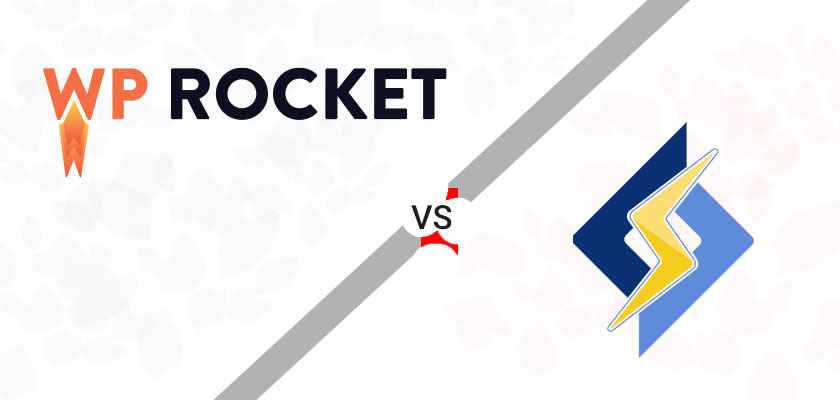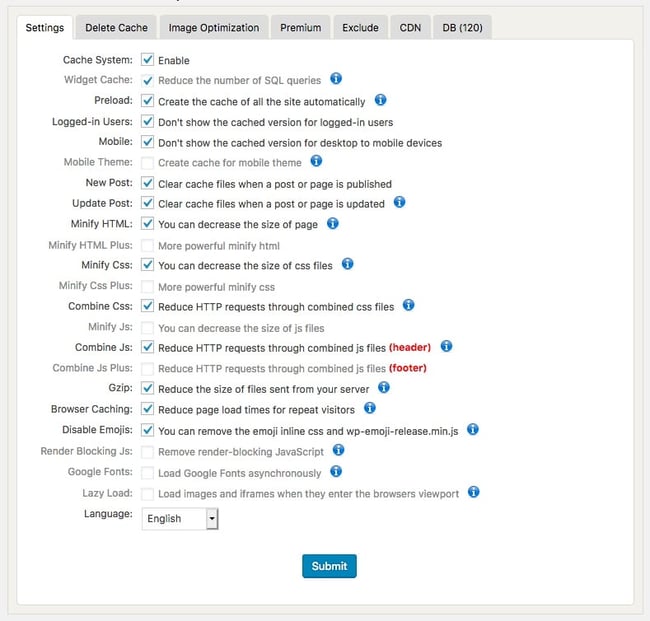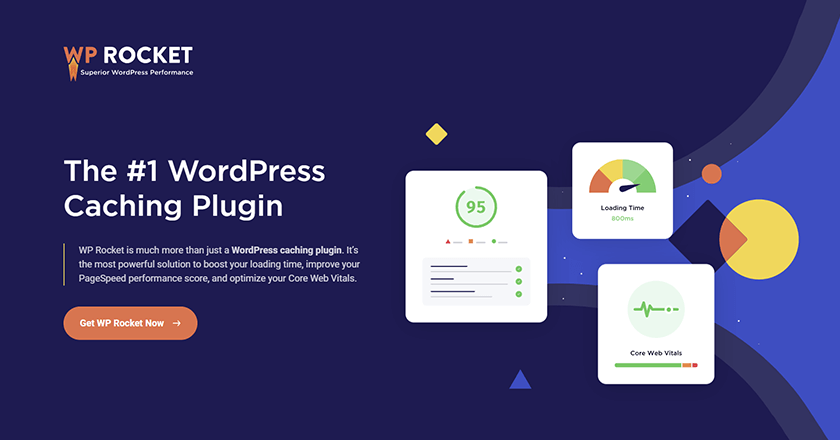Not known Incorrect Statements About Litespeed Cache Vs. Wp Rocket
Wiki Article
Litespeed Cache Vs. Wp Rocket Can Be Fun For Everyone
Table of ContentsLitespeed Cache Vs. Wp Rocket for DummiesMore About Litespeed Cache Vs. Wp RocketThe Only Guide for Litespeed Cache Vs. Wp RocketThe Greatest Guide To Litespeed Cache Vs. Wp RocketSome Ideas on Litespeed Cache Vs. Wp Rocket You Should Know
They have a smaller sized documents size, making them easier to fill. That's a good trade-off if you desire better loading performance.
If you're running your website on Word, Press, you're unquestionably utilizing plugins and widgets to include functionalities to your site. Plugins are what makes Word, Press such a powerful system. However using a lot of plugins is counterintuitive due to the fact that they reduce your internet site down. Every plugin you install adds a little code to your page, making it much heavier than it must be.
Let's say your server is based in Australia, but you have lots of visitors from India. Rather than sending documents straight from Australia, the CDN can send documents from a web server in India, making this procedure much faster and a lot more efficient. Redirects are an all-natural component of any kind of web site, and there's nothing wrong with them.
The Main Principles Of Litespeed Cache Vs. Wp Rocket
They will not substantially reduce you down. In the situation of redirect chains, they will. By linking as near to the last destination as feasible, you stay clear of developing also numerous redirects and thus, reduce your web site's load. Unsurprisingly, several of the most effective resources for maximizing your web site are from Google.This tool gives a waterfall layout of how all the assets tons on your web site - LiteSpeed Cache vs. WP Rocket.
Don't blind on your own to scores and metrics as those numbers are not agent of all your site visitors. Every user is different. Every visitor uses one more kind of web link, gadget, and internet browser. Figure out who your users are, just how they access your site, and what they do while they exist.
Use the recommendations to get started on boosting your page rate, however do take these with a grain of salt. They are excellent beginning points, however there is so a lot extra you can do!

This will lower latency and result in enhancements to your web page speed due to the fact that it reduces any type of opportunity of a hold-up or the number of round journeys generated.
Not known Facts About Litespeed Cache Vs. Wp Rocket
As websites innovation, like the advancement and large use Java, Script libraries, has advanced over time, the usage of this modern technology has actually been toughened up by the speed, or bandwidth, of Internet connections and the handling and memory resources of gadgets. Basically: the much more information and sources the web server sends to the internet browser, the longer it requires to supply the "plan" throughout a web link and the slower the page will be visually provided in the internet internet browser and come to be useful.
This is so when a site visitor sees this web site once again, it does not need to refill the whole page. This benefits web page speed, as this saves money on time invested sending out several HTTP requests to the web server. An extra benefit is the reduction of transmission capacity and consequently the total price of hosting your website.
This will lower latency and result in renovations to your web page speed since it lowers any opportunity of a delay page or the number of round journeys created.
As internet page technology, like the development and vast usage of Java, Script libraries, has actually advanced in time, the usage of this innovation has actually been solidified by the speed, or data transfer, of Internet links and the handling and memory sources of gadgets. Basically: the a lot more data and sources the web server sends out to the internet browser, the longer it requires to deliver the "bundle" across a web link and the slower the web page will be aesthetically provided in the internet internet browser and end up being useful.
Page speed impacts traffic throughout all networks and resources, however since Google has led developments being used web page rate in internet search ranking formulas, reducing latency has actually become a core component of search engine optimization. While anything that includes time to the web page rendering process is a web page speed variable, there are a number of concerns that are most common: The time between when the user or internet browser demands the page and the initial action from the server is called the server reaction time, additionally measured as Time To First Byte (TTFB), or the time at which the server sends the first data that the internet browser can make use of to construct and render the page.
Report this wiki page